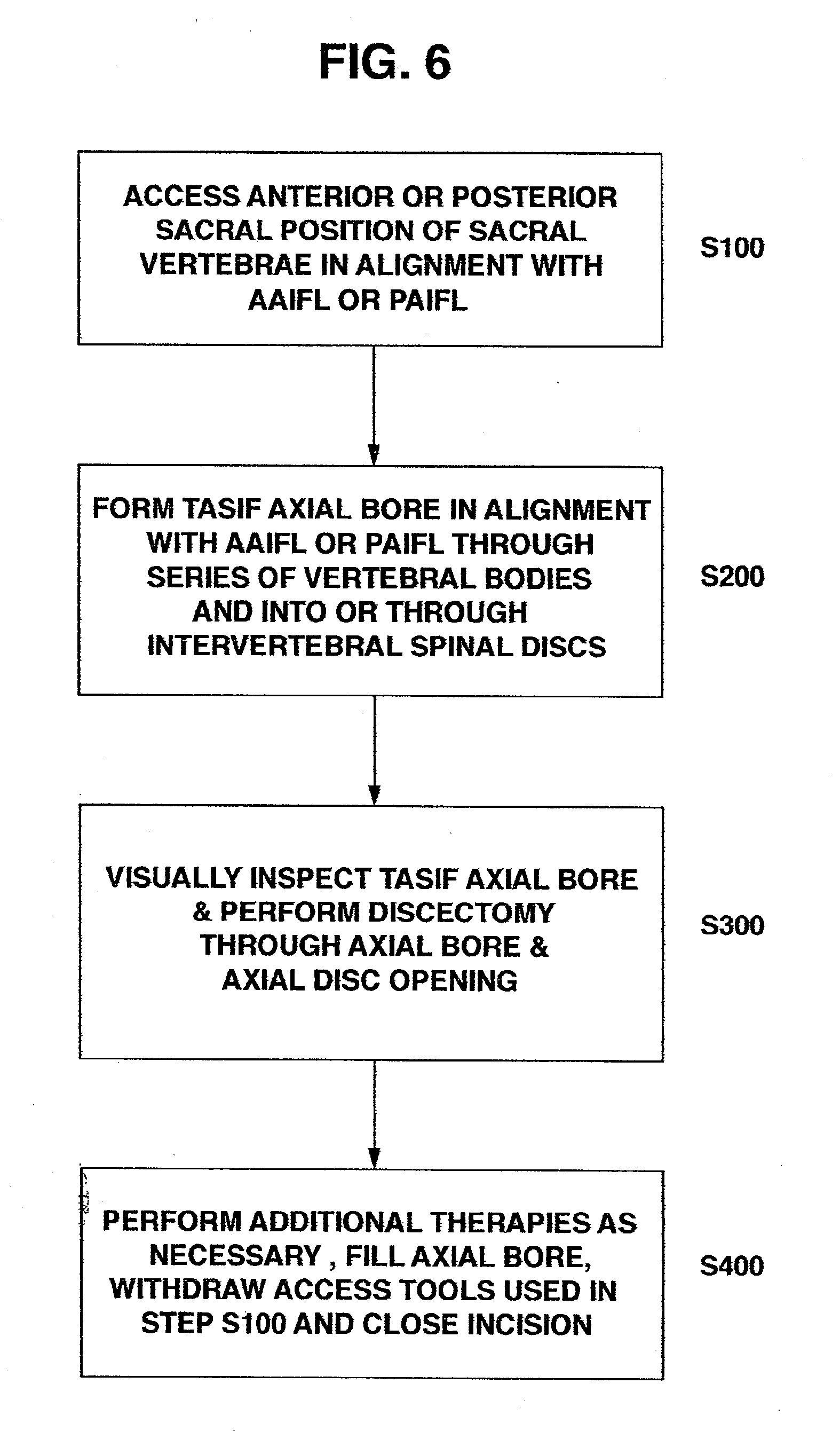Apparatus for performing a discectomy through a trans-sacral axial bore within the vertebrae of the spine
a transsacral axial bore and discectomy technology, applied in the field of spine surgery, can solve the problems of lessening the ability of the annulus to elastically deform under load, and increasing the risk of injury
- Summary
- Abstract
- Description
- Claims
- Application Information
AI Technical Summary
Benefits of technology
Problems solved by technology
Method used
Image
Examples
Embodiment Construction
[0080] The methods and surgical instrumentation and axial spinal implants disclosed in the above-referenced provisional application No. 60 / 182,748 and in the above-referenced co-pending, commonly assigned, related patent applications can be employed in the practice of the present invention.
[0081] Attention is first directed to the following description of FIGS. 1-6 is taken from the above-referenced parent provisional application No. 60 / 182,748. The acronyms TASF, AAFL, and PAFL used in the '748 application are changed to TASIF, AAIFL and PAIFL in this application to explicitly acknowledge that instruments can be introduced for inspection or treatments in addition to the fusion and fixation provided by axial spinal implants that may be inserted into the axial bores or pilot holes.
[0082]FIGS. 1-3 schematically illustrate the anterior and posterior TASIF surgical approaches in relation to the lumbar region of the spinal column, and FIGS. 4-5 illustrate the location of the TASIF impla...
PUM
| Property | Measurement | Unit |
|---|---|---|
| diameter | aaaaa | aaaaa |
| diameter | aaaaa | aaaaa |
| diameters | aaaaa | aaaaa |
Abstract
Description
Claims
Application Information
 Login to View More
Login to View More - R&D
- Intellectual Property
- Life Sciences
- Materials
- Tech Scout
- Unparalleled Data Quality
- Higher Quality Content
- 60% Fewer Hallucinations
Browse by: Latest US Patents, China's latest patents, Technical Efficacy Thesaurus, Application Domain, Technology Topic, Popular Technical Reports.
© 2025 PatSnap. All rights reserved.Legal|Privacy policy|Modern Slavery Act Transparency Statement|Sitemap|About US| Contact US: help@patsnap.com



